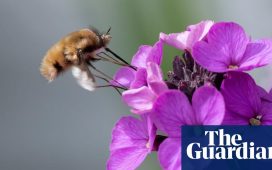A remote island in the Caribbean could offer clues as to how invasive species are able to colonise new territories and then thrive in them, a new study suggests.
Scientists from the University of Plymouth have recently completed extensive research into a lizard population on the Cayman Islands.
Up until the mid-1980s, there had never been a recorded sighting of the Maynard’s Anole (Anolis maynardi) on Cayman Brac island despite it being less than 10km from its native territory, Little Cayman.
However, since the species was first discovered on Cayman Brac in 1987 — in what is thought to have been a human-assisted colonisation — its population has spread right across the 39km² island.
For this study, recent graduate Vaughn Bodden and Lecturer in Conservation Biology Dr Robert Puschendorf conducted a detailed analysis of the invasive species.
They wanted to assess whether individuals at the forefront of the invasion have developed distinct biological traits that are advantageous for dispersal, and compared their findings to animals in the area of first introduction and the native population on Little Cayman.
They discovered the Cayman Brac population has diverged morphologically from the native population, and within the invasive range there was trend of increasing forelimb length from the core to range edge areas. This ran contrary to the expected findings that longer hindlimbs would be the trait selected as a dispersal-related phenotype.
They also showed that the introduced population had lower levels of parasite prevalence, and that both males and females were of significantly higher body condition than the native population.
Writing in the Journal of Zoology, they say the results are a perfect example of how a species can colonise a new territory, and the biological adaptations it can make in order to do so.
Vaughn, who graduated with a First from the BSc (Hons) Conservation Biology programme in 2018, said: “There has been a history of lizard studies indicating that longer hindlimbs are an important factor affecting movement ability, so to not find longer hind limbed animals on the range edge was a surprise. For parasites, we found a clear decreasing trend in prevalence within the invasive population from the area of first introduction to the range edge, indicating that the parasites lag behind the host during periods of range expansion. We think our findings add to the growing body of literature that demonstrates the complex dynamics of species’ invasions. The results highlight that the animals on the range edge of an invasion are likely to be experiencing different ecological selection pressures that can result in changes in behaviour, morphology, and health for the animals.”
Dr Puschendorf has spent several years researching the consequences of emerging infectious diseases and climate change on biodiversity, with a particular focus on Central America. He added: “Biological invasions are an important conservation threat across the world. However, every invasion needs to be carefully investigated to identify impacts to native eco-systems and identify potential mitigation strategies. In this instance there is likely to be limited overlap with, and therefore a limited threat to, the endemic anole population — the Cayman Brac Anole (Anolis luteosignifer) — because one inhabit the crowns of trees while the other is found closer to the ground. This in some ways highlights the challenges biodiversity managers face when managing species invasions with limited resources, and emphasises the need for greater collaboration among scientific and policy communities.”
Story Source:
Materials provided by University of Plymouth. Note: Content may be edited for style and length.













